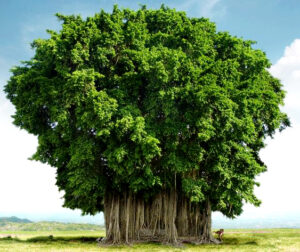Did You Know - May
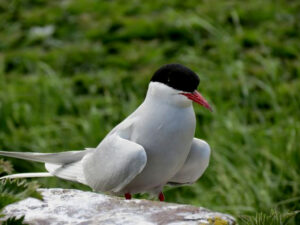
The Ultimate Globetrotter
The Arctic Tern holds the record for the longest migration of any animal on Earth! These amazing birds travel an astonishing 71,000 kilometers (44,000 miles) round-trip every year from their breeding grounds in the Arctic to their wintering grounds in Antarctica and back again.
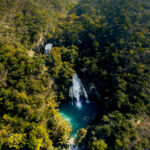
The Lungs of Earth
The Amazon Rainforest produces over 20% of the world’s oxygen, earning it the title of “Lungs of the Earth.” This vast expanse of greenery is not only a crucial habitat for countless species but also plays a vital role in regulating the planet’s climate.
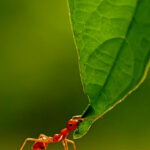
Ants’ Sleep Secrets
Ants do not sleep in the same way that humans do. Instead of having a single consolidated period of rest like humans, ants have periods of rest throughout the day and night. These rest periods are typically shorter and more frequent than human sleep cycles. Ants are also capable of being active for long periods without rest, depending on factors such as temperature, food availability, and colony needs.
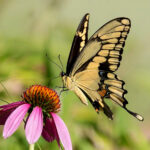
Floral Feasts and Love Matches
Butterflies taste through sensors located on their legs. These sensors, called chemoreceptors, detect chemicals on the surfaces they touch. When a butterfly lands on a flower, for example, it uses its legs to taste the plant’s nectar to determine if it’s suitable for feeding. This unique adaptation helps butterflies identify appropriate food sources and potential mates.
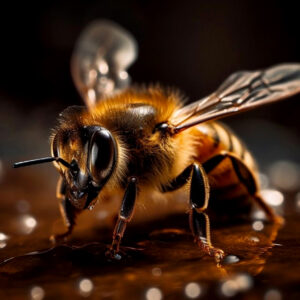
Five Eyed Wonders
Bees actually have five eyes, but they are not in the way you might imagine. They have two large compound eyes, which are the main eyes used for seeing shapes, colors, and movement. Additionally, they have three small eyes called ocelli, which are located on the top of their head in a triangular pattern. These ocelli are simple eyes that are sensitive to light intensity and direction, helping the bee navigate and maintain stability while flying, especially in relation to the position of the sun.
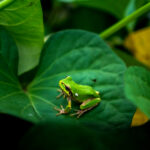
The Skin Sippers
Frogs don’t drink water in the same way humans or other animals might. Instead, they absorb water through their skin. Frogs have semi-permeable skin, which means they can absorb water and even oxygen directly through their skin. They also absorb moisture through their pelvic patch, a highly vascularized area on their belly. This process allows frogs to stay hydrated without needing to actively drink water.

Sahara’s Lost Paradise
The Sahara Desert, known for its scorching temperatures, was once lush and teeming with life. Fossil evidence suggests that around 10,000 years ago, this arid landscape was home to ancient rivers, lakes, and even large mammals like elephants and hippos.

Thermal Tale of Fur
The majestic polar bear is perfectly adapted to its icy habitat. Its fur is not actually white but transparent, and its skin is black, helping it absorb as much heat as possible from the sun’s rays to stay warm in freezing temperatures.
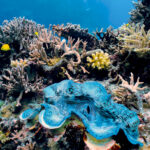
Earth’s Living Wonder
The Great Barrier Reef, off the coast of Australia, is the largest living structure on Earth, visible even from space! Spanning over 2,300 kilometers (1,400 miles), this vibrant ecosystem is home to an incredible array of marine life, including over 1,500 species of fish.
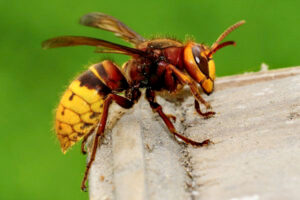
Nature’s Goliath
The Japanese Giant Hornet is the world’s largest hornet, measuring up to 5 centimeters (2 inches) in length. With its powerful mandibles and potent venom, this formidable insect is capable of decimating entire honeybee colonies within hours.

Savior and Threat
The ocean absorbs about 30% of the carbon dioxide produced by human activities, helping to mitigate the impacts of climate change. However, this influx of CO2 is causing ocean acidification, posing a serious threat to marine life, especially corals and shellfish.
Did You Know - April
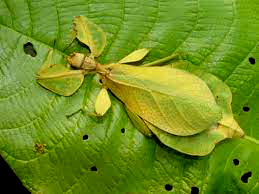
Mimicry in nature
Mimicry in nature is a fascinating example of how various species have evolved to resemble other organisms or elements in their environment, often for survival purposes. It serves as a defense mechanism against predators, a means of securing prey, or a way to gain advantages in the competition for resources. One notable example is the owl butterfly. The owl butterfly has eye-like spots on its wings to deter predators, and the stick insect resembles a twig for camouflage.
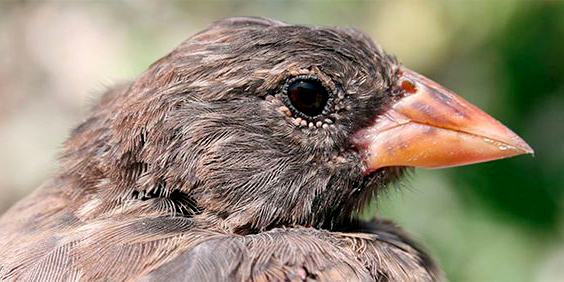
The Vampire Finch
Found on the Galápagos Islands, the vampire finch supplements its diet by drinking the blood of other birds. It pecks at the skin around the eyes and feet of other birds, feeding on the blood that emerges, showcasing a unique adaptation to its environment.
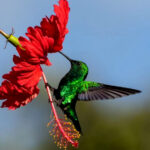
The Hummingbird’s Memory Skills
Hummingbirds are known for their exceptional memory. They can remember the locations of individual flowers, how long it takes for flowers to refill with nectar, and even remember humans who provide them with food.

Pando-The Trembling Giant
Pando, located in Utah, is considered one of the oldest and heaviest living organisms on Earth. It’s a grove of quaking aspen trees, connected by a single root system, making it a clonal colony. Estimates suggest it’s over 80,000 years old.

Bioluminescent Bay
There are bays, such as Mosquito Bay in Puerto Rico, where the water displays bioluminescence due to the presence of dinoflagellates. These microscopic organisms emit light when disturbed, creating a stunning natural light show at night.
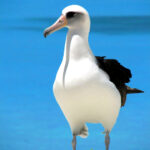
The Albatross’ Epic Journeys
Albatrosses are known for their incredible long-distance flights. Some species can travel thousands of miles over the open ocean without stopping. One of the most remarkable is the wandering albatross, capable of circumnavigating the globe.

The Pistol Shrimp’s Sonic Weapon
The pistol shrimp possesses one of the loudest sounds in the ocean. By snapping its specialized claw shut at incredible speed, it creates a cavitation bubble that, when it collapses, produces a shock wave and a sound reaching up to 200 decibels. This process is used for hunting and communication.
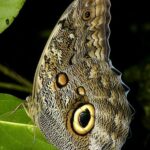
The Satyr Butterfly’s Ant Association
Certain species of satyr butterflies have developed a unique relationship with ants. The larvae of these butterflies produce sugary secretions that attract and appease ants, leading the ants to protect the caterpillars from predators.
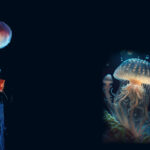
The Immortal Jellyfish
Turritopsis dohrnii, commonly known as the “immortal jellyfish,” has the remarkable ability to revert its cells back to their earliest form and start its life cycle anew. This process can potentially go on indefinitely, allowing the jellyfish to bypass death and age.
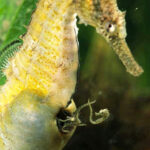
The male seahorse
The male seahorse is the one that becomes pregnant. During courtship, the female transfers her eggs to a specialized pouch on the male’s abdomen, where he carries and nurtures the developing seahorse embryos until they hatch.
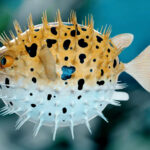
Underwater Architects
Pufferfish, known for their ability to inflate into spiky balls when threatened, also showcase impressive architectural skills. Male pufferfish create intricate patterns on the seafloor by flapping their fins to attract mates, with some patterns spanning several meters in diameter.



